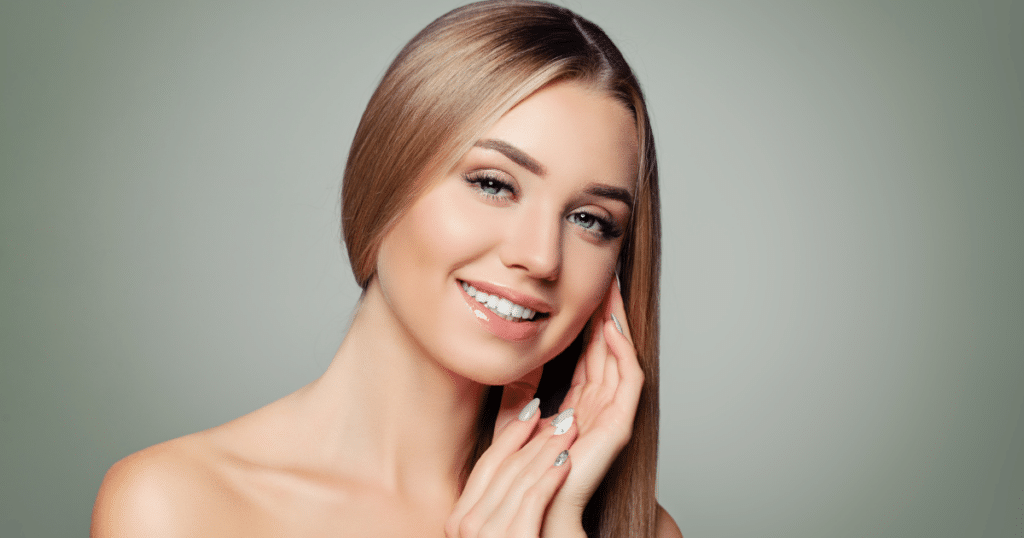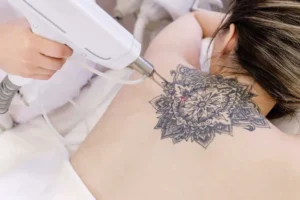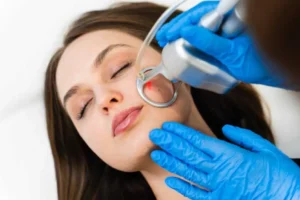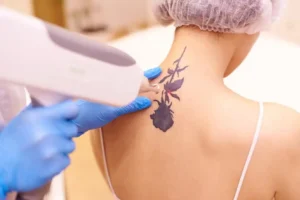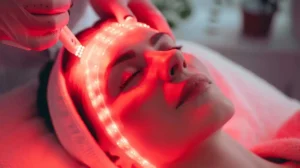Botox Results for Migraine & Sweating: Exploring Treatments
To Explore Botox Results, one must understand what Botox is?. Botox a non-invasive cosmetic treatment has evolved through its inception from fat to wax and silicone to hyaluronic acid now a days for wrinkles reduction, addressing facial symmetries, getting volume and so on. However, it’s use as an effective treatment for medical conditions like hyperhidrosis (excessive sweating) and chronic migraines is less discussed and unknown to many. Let`s explore the unknown use of Botox to address these two conditions, what Botox results patient can expect and what they should know while considering Botox for non-cosmetic purposes.
Botox Results For Migraine & Sweating: How It Works?
Botox, a Botulinum toxin type A, blocks nerve signals in the muscles. Application of its desired quantity by injection, controls muscle contractions. works by blocking nerve signals in the muscles. When injected in small, controlled doses, it prevents muscle contractions. In non-invasive cosmetic treatments, it relaxes and smooths out wrinkles and fine lines. But when Botox aims to use as a medical treatment, it controls nerve signals that cause pain and sweating.
Botox for Migraines: How It Provides Relief
Migraine a chronic headache often occurs 15 or more days in a month with a duration of 4 or more hours. A debilitating chronic migraine pain disturbs one`s daily life. As Botox has FDA approval to treat these chronic migraines since 2010. Though it reduces severity and frequency of migraines but still unknown for too many of us that, it can do wonders in migraines besides non-invasive cosmetic uses.
How Does Botox Treat Migraines?
For migraines, Botox injection targets head and neck areas. It blocks pain signals before transmitting to nerve endings and prevent the outbreak of migraines. To cope with migraines, several injections are applied on temples, back of neck and forehead areas in several sessions every 12 weeks to attain maximum effectiveness.
Botox Results for Migraines: What to Expect
Those who are skeptical about Botox effectiveness as medical treatments for migraines, must read a study published in HEADACHE journal in 2022. According to this study, Botox injections have reduced number of migraines day per month from 15 to 7 ore less, as a significant success for many patients. And reduced migraines symptoms within 2 to 3 weeks when took their first treatment.
How Often Can You Get Botox for Migraines?
An answer to this question is that, for patients having chronic migraines,should get Botox treatments in every 12 weeks. As it guarantees results that lasts longer and also ensures no over dosage that depicts no side effects. This interval ensures long-lasting results with less side effects of over-treatment. Consistent treatments not only reduce the number of migraines but also lessen their severity by the time.
Botox for Hyperhidrosis: A Life-Changing Treatment
Embarrassment while socializing is normal due to excessive sweating or hyperhidrosis. Immense sweating can affect different body areas like forehead, palm, feet and underarms.
If you are one of the hyperhydrosis victim, Botox injections are the safest and effective solution for your excessive sweating problem, because it blocks the nerves that produce sweat in specific areas.
How Does Botox Stop Sweating?
Botox interrupt and block signals emitting from nerve that cause sweat gland to activate. Ultimately blocked glands stop producing sweat and one feels immense confidence while socializing. Mostly, people opt this treatment to deal with underarm sweating issues but also effective for other areas of the body.
How Often Can You Get Botox for Sweating?
Results of Botox for sweating, normally stays around 4 to 6 months. That is why it is necessary to have follow up appointments and consultaiton twice in a year, that will make treatment`s effect to last longer. The answer to “How often you can get Botox” is subject to body reaction and metaboliztion of Botox treatment. As stated above, in most of the cases, twice a year treatments are suffcient enough to minimize secessive sweating.
Botox Results for Hyperhidrosis: What to Expect?
Results vary person to person, areas of treatment and one`s physical health but normally visible 4 to 7 days after treatment. Whereas in two weeks, complete results become noticeable.
Statistical data of clinical studies surveys expressing that, Botox has 87% success rate to reduce underarm sweat within one session. Whereas results lasts upto 4 to 6 months. These surveys also depicts that, after treatments patients feel immense reduction in sweating and living satisfied and improved quality life.
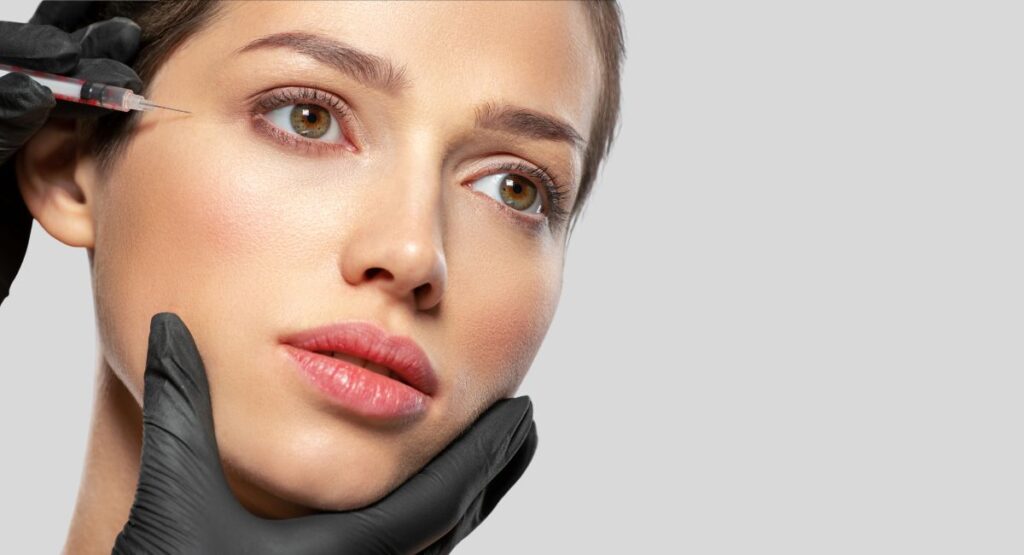
Botox Before and After: Migraine & Hyperhidrosis Treatments
Those who are looking to opt Botox for their migraine or Hyperhidrosis treatment must be eager to know about the Botox before and after results. Before getting treatment for their migraines, many patients experiencing exhausting headaches every month. But after Botox, these patients living realaxing life with fewer headache frequency in a month lesser sever pain.
Whereas, for hyperhidrosis patients before Botox treatments, excessive sweating making their social and professional life more struggling. But after Botox treatments, patients experience less sweating that give them immense confidence and relief from constant worry.
Finding Botox Centers Near Me: Choosing the Right Provider
In the quest to get the right treatment for your migraines or hyperhidrosis issues, is the selection of the best aesthetics and wellness services provider near you to get the optimal Botox results. The provider must specialize in medical, aesthetics and wellness treatments, well equipped infrastructure, licensed and trained practitioners such as for Botox.
If you are searching a well reputed medical, aesthetics and wellness service provider in Reno & Henderson– who has comprehensive understanding of Botox treatments, then none other than Revenge MD will be your go to Botox for migraines and hyperhidrosis. for Botox clinics near me that specialize in both medical and cosmetic uses of Botox, as this will ensure your provider has a comprehensive understanding of the treatment.
Botox Treatments for Migraines vs. Hyperhidrosis: Key Differences
Botox can treat both conditions very well but there are some key differences when talking about their proceduers and results.
Migraine Treatment:
- To treat migraines with Botox, head and neck are the target areas.
- After every 12 weeks, repetitive treatment is must.
- Results are visible in few weeks after treatment.
- It reduces the frequency and severity of migraines.
Hyperhidrosis Treatment:
- To treat hyperhidrosis with Botox, underarm, palm, feet & forehead are target areas.
- After every 6 months, repetitive treatment is necessary.
- Results lasts upto 4 or6 months.
- It blocks signals emitting from nerve to sweat gland.
What Not to Do After Botox: Essential Post-Treatment Care
Post treatment follow ups are necessary for both migraine and hyperhidrosis treatments to follow your provider`s post-treatment care instructions. Because these are essential in achieving the best Botox results.
Few below things you should not do after Botox:
- Avoid Strenuous Exercise:Vigorous exercises or any physical exertion that increase blood flow and ultimately Botox may spread into other unintended areas, leads to bad results.
- Do Not Lie Down for at Least 4 Hours: Right after treatment till 4 hours keep your self to upright position, that will allow Botoxto rest in the injected muscles and avoids migration.
- Avoid Touching or Massaging the Injection Sites:Post treatmentMassages or any type of pressure application is prohibited to avoid Botox to disperse other surrounding tissues.
Botox Injections: Safety and Side Effects
Botox is the most safe and effective medical and non-invasive treatment, if practitioner is well trained and enough qualified. But there might be some side effects of Botox treatments,like any medical and non-invasive procedures, there can be side effects.
Some side effects of migraine treatments are:
- Mild bruising or swelling at the injection site
- Temporary muscle weakness or fatigue
- Headaches (in rare cases)
For hyperhidrosis, side effects are usually limited to the area where the injections were administered and may include mild discomfort. For migraines, side effects can include a stiff neck or muscle tenderness. Both conditions generally improve within a few days.
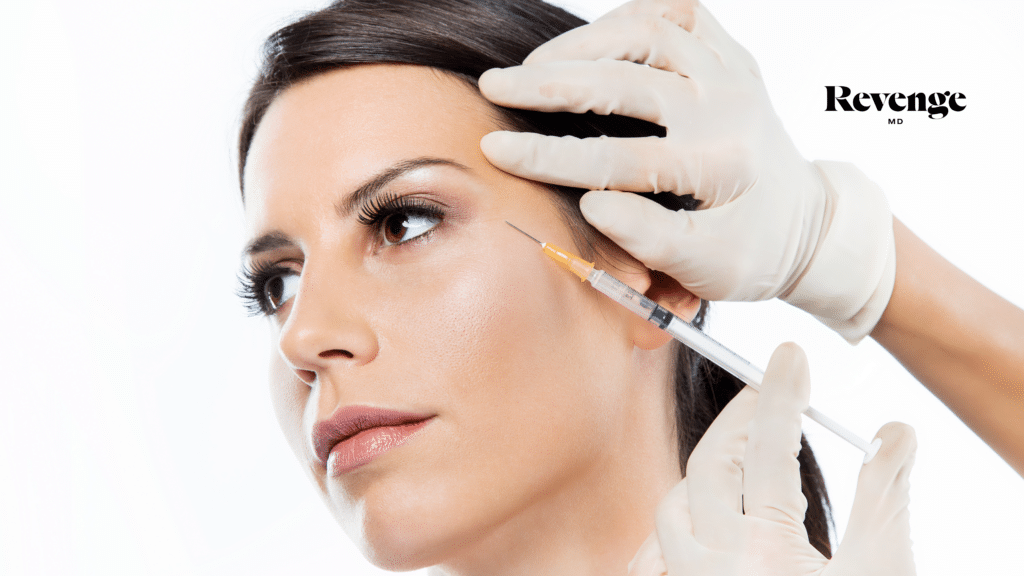
Are Botox Injections Painful?
In the evolutionary industry of cosmetic treatments, injection needles are fine enough, that minimally uncomfortable when applying Botox injections. Whereas topical numbing creams also minimizes discomfort. In hyperhidrosis treatments, underarms might feel slight tenderness, but this subsides in a quick time.
Botox Treatments: Clinical Evidence and Success Rates
Botox’s effectiveness for treating both chronic migraines and hyperhidrosis is well-documented in clinical studies. A 2021 study in the Journal of Neurology found that 70% of patients with chronic migraines experienced at least a 50% reduction in headache days after two Botox treatment cycles . Meanwhile, a 2020 study in the Journal of Dermatologic Surgery showed that Botox successfully reduced sweating in 95% of patients with hyperhidrosis .
Conclusion: Achieving the Best Botox Results for Migraines & Sweating
Botox besides cosmetic enhancement, is a powerful treatment to address chronic migraines and excessive sweating. Whether, you are struggling with frequent headaches and hyperhidrosis, Botox is there to provide you long lasting relief that will improve your quality of active and healthy life. Through treatments with regular intervals and proper care, you can enjoy evident improvements in both conditions.
If you’re considering Botox for migraines or hyperhidrosis, contact Revenge MD aesthetics and wellness centers in Reno & Henderson as your trusted Botox clinics near me, where our qualified professionals (upon consultation) will guide you through the process.
Call (775) 983-5630 Botox Reno and (702) 335-7033 Botox Henderson to get your Botox treatments other then cosmetic needs.
Source:
Treatment of pain attributed to plantar fasciitis with botulinum toxin a: a short-term, randomized, placebo-controlled, double-blind study, National Library of Medicine, Mary S Babcock, Leslie Foster, Paul Pasquina, Bahman Jabbari


